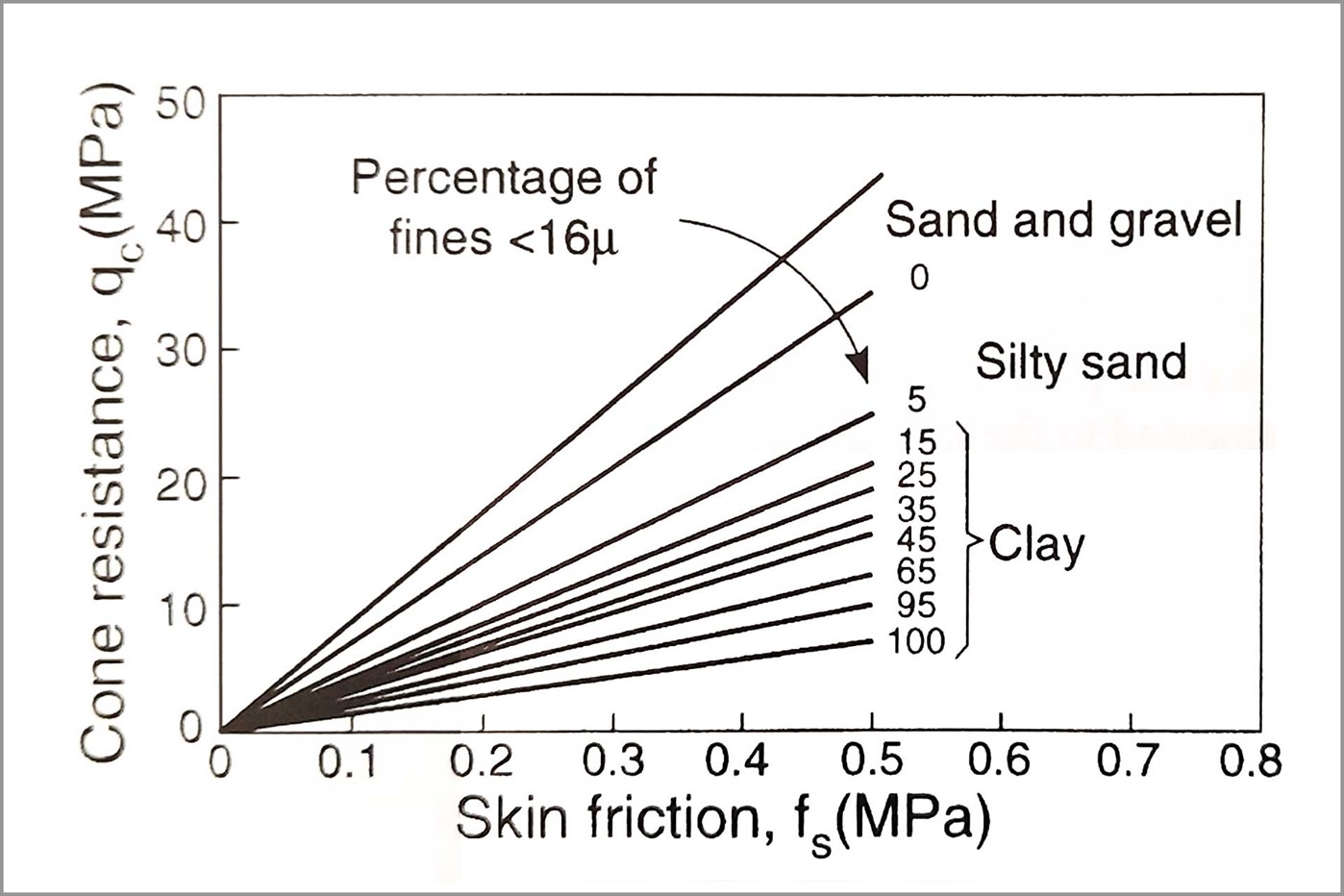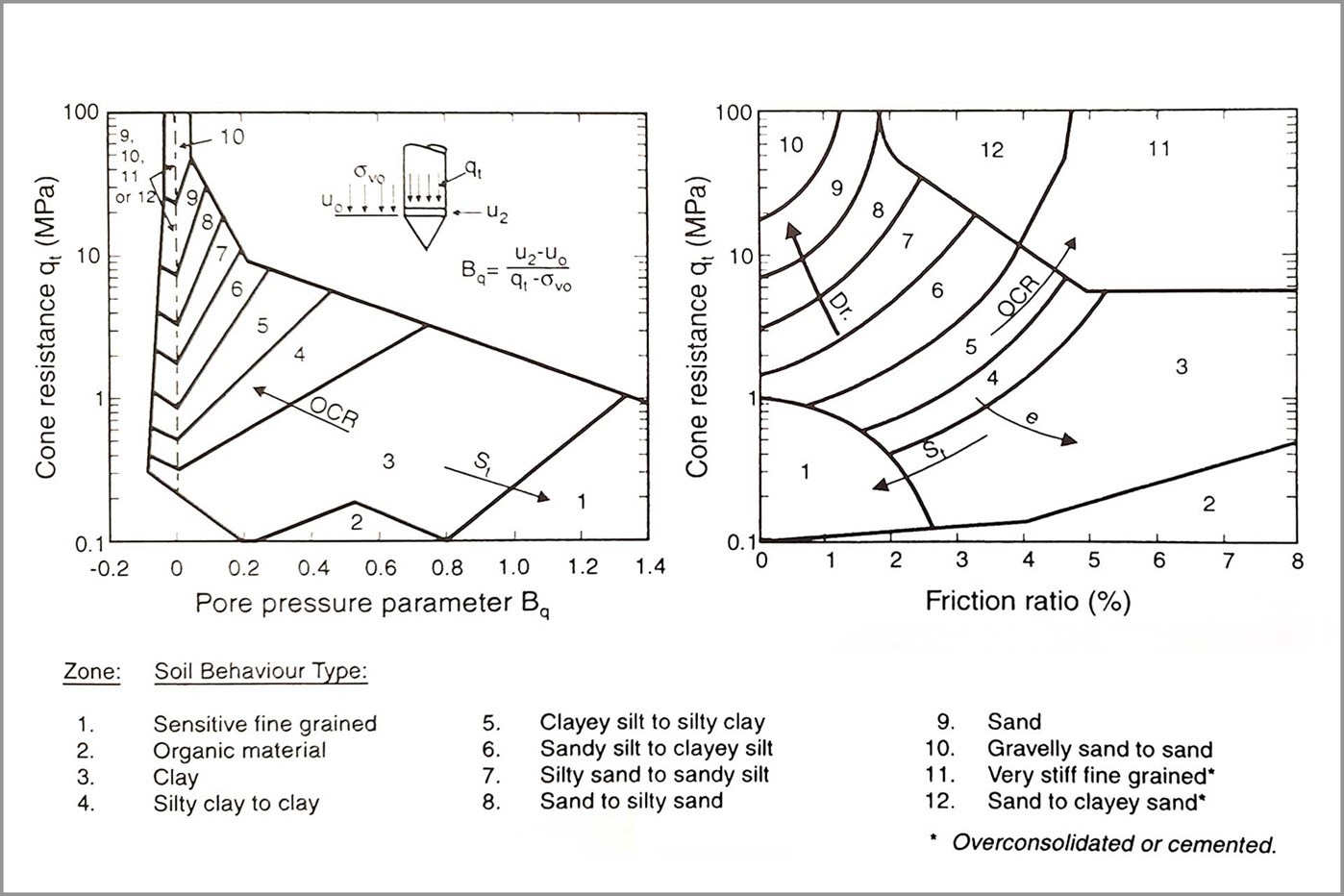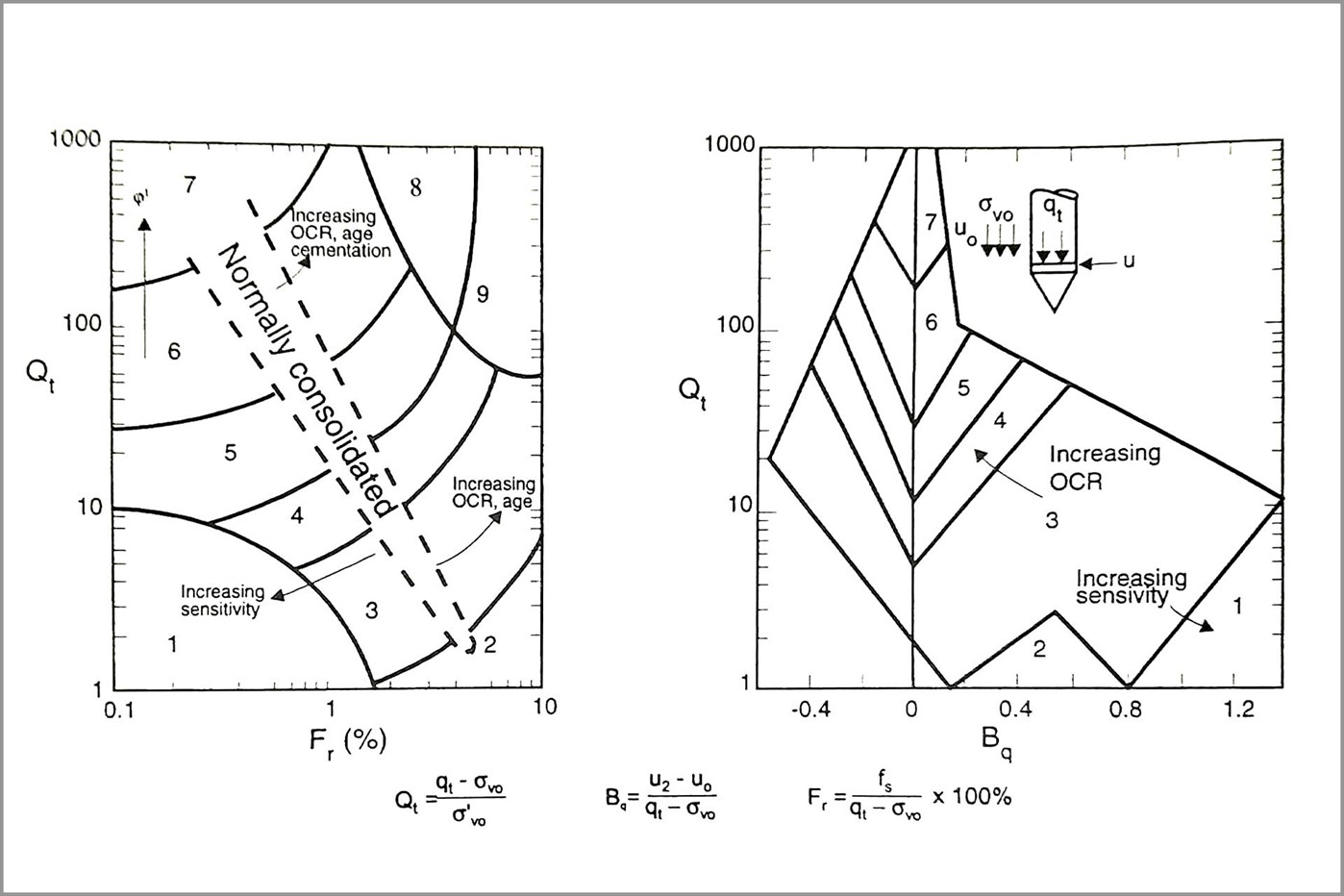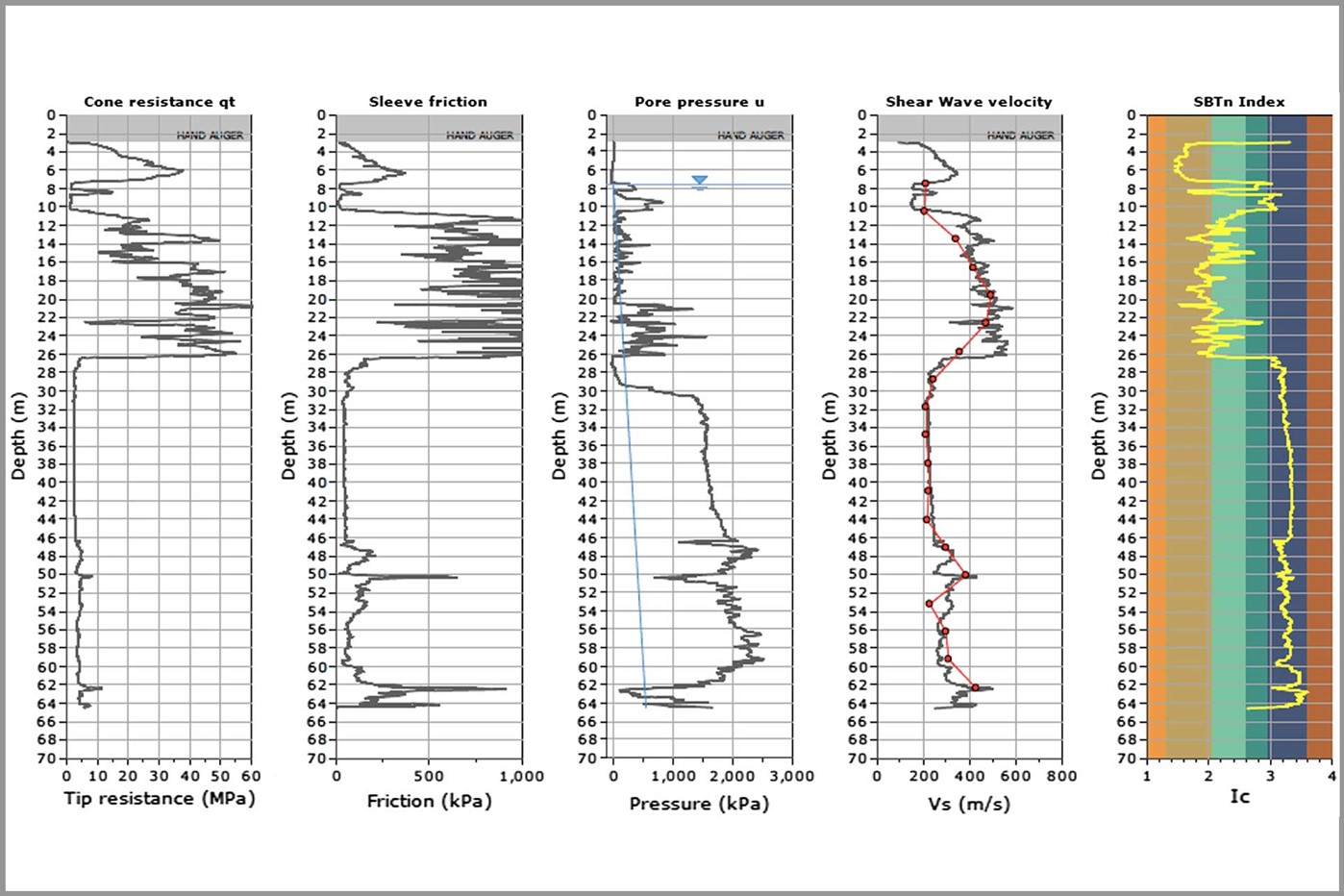One of the most common applications of Cone Penetration Testing (CPT) is to identify and delineate soil layers. When pushing the cone during CPT the data acquired can provide an indication of the soil behaviour, often referred to as Soil Behaviour Type (SBT). CPT does not provide a direct measurement of the typical physical properties used to define soil type such as grain size and material, but does however provide a good indication of the soil behaviour and thus the mechanical characteristics, such as strength and stiffness.
Over the years various soil behaviour classifications have been generated, starting with the classifications made in the 1950s by Begeman using the data from the mechanical friction jacket cone, whereby cone tip resistance is compared with sleeve friction (see Figure 1).
However, charts of this nature produce narrow bands, which make classification difficult and only account for a limited range of soil types.
An improvement of CPT based soil classifications is to compare the cone tip resistance with the friction ratio. Typically the cone tip resistance is high in sands and low in clays, and the reverse applies to the friction ratio: low in sands and high in clays.

Figure 1: An example soil classification chart whereby cone resistance and skin friction (sleeve friction) are compared | Image source: Lunne, T., Robertson, P.K. and Powell, J.J.M. (1997) Cone Penetration Testing in Geotechnical Practice
Over the years a great number of charts for soil (behaviour) classification have been presented, but in this short document we will focus on just one: the soil behaviour classification developed by Robertson and Campanella in the late 1980s (see Figure 2).
This is by far the most commonly used classification and identifies 12 different Soil Behaviour Types (SBTs). An added advantage of this classification is that it links the cone tip resistance not only to the friction ratio, but also in a separate chart to the pore pressure parameter.
This provides an instant verification of the outcome results as well as allows the user to use the most appropriate method for the data collected. For example, in very soft soils where testing has been performed with a subtraction cone the friction values may be less reliable and thus it may be better to perform a classification using the pore pressure parameter.

Figure 2: The soil classification proposed by Robertson and Campanella | Image source: Lunne, T., Robertson, P.K. and Powell, J.J.M. (1997) Cone Penetration Testing in Geotechnical Practice
As these parameters are available as the test is performed, the CPT operator will have an indication of the soil behaviour type in real time during the test.
In 1990 Robertson amended this classification to account for the fact that both the penetration resistance and sleeve resistance increase with depth due to the increase in effective overburden stress.
This was achieved by using normalised values for the cone tip resistance, the friction ratio and the pore pressure parameter (see figure 3).
This improvement to the classification allows the user to assess the consolidation state of soils and widens the range in which the charts can be used.

Figure 3: Normalised soil classification charts | Image source: Lunne, T., Robertson, P.K. and Powell, J.J.M. (1997) Cone Penetration Testing in Geotechnical Practice
CPT data is typically presented against depth. However, soil classification data such as the SBT are normally presented in graphs, such as those already shown in this document. This makes it harder to assess changes in SBT with depth and also harder to analyse soil behaviour alongside conventional CPT data.
To overcome this Jefferies and Davies proposed the Soil Behaviour Type Index (Ic), which allows SBT to be presented as a continuous profile alongside CPT data (see Figure 4).
Although this does further reduce the number of zones in the classification it does provide a useful visual classification.

Figure 4: CPT data with soil classification | Image source: P. K. Robertson, M.ASCE: Comparing CPT and Vs Liquefaction Triggering Methods
The boundaries set out in the various classification charts were proposed based on historical data from well-studied test sites. However, soil is not the same world over and this should be taken into account when using soil classifications. Limited sampling alongside CPT soundings on a project allows the user to perform a site specific correlation of the CPT data to the soil encountered. And the outcome of that correlation could even result the modification of classification boundaries in a particular chart to reflect the reality of the soils on a given project.
Due to the high applicability of CPT data to assess mechanical soil characteristics (such as strength and stiffness), the Soil Behaviour Type (SBT) charts are a robust soil classification method. SBT charts are a useful tool for delineating soils based on their mechanical characteristics and offer a quick visual identification.
As with all correlations, care must be taken when using a particular soil classification method to ensure that it is appropriate for the soil conditions where the CPT is performed. And if you would like more information on soil behaviour classification then please get in touch with one of our CPT experts on CPT@eijkelkamp.com.